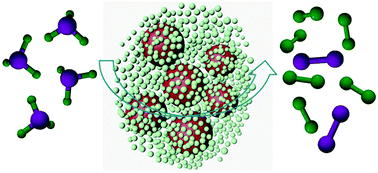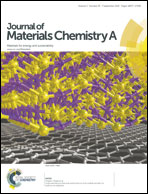Transition metal nanoparticles dispersed in an alumina matrix as active and stable catalysts for COx-free hydrogen production from ammonia†
Abstract
Transition metal (Fe, Co, and Ni) nanoparticles dispersed in an alumina matrix as catalysts for NH3 decomposition have been synthesized by a facile co-precipitation method. The fresh and used catalysts were characterized by various techniques including powder X-ray diffraction (XRD), N2 adsorption/desorption, and transmission electron microscopy (TEM). Also, temperature-programmed reduction by hydrogen (H2-TPR) combining in situ XRD was performed to investigate the reducibility of the studied catalysts. For the ammonia decomposition reaction, 88% conversion of ammonia can be realized at the reaction temperature as low as 600 °C using a space velocity of 72 000 cm3 gcat−1 h−1 NH3 during a long term (72 h) catalysis test without any observable deactivation. The small amount of alumina (low to 10 at%) can act as the matrix in which the catalytically active transition metal nanoparticles were stabilized. Thus, the agglomeration of active transition metals under reaction conditions was significantly suppressed and the high activity of catalysts was maintained.



 Please wait while we load your content...
Please wait while we load your content...